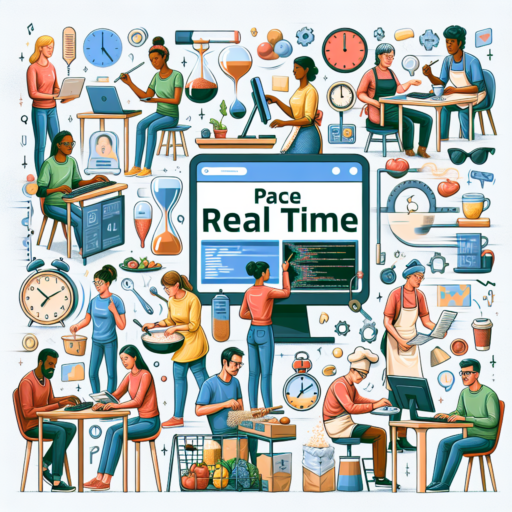No se han encontrado productos.
What is a Race Predictor for Running?
A Race Predictor for Running is a tool designed to estimate an athlete’s race time based on various factors, such as previous race times, average training pace, and the distance they aim to race. These predictors take into account the athlete’s current fitness level and provide a target time, helping runners set realistic goals for upcoming races.
Race predictors often employ specific algorithms or formulas, such as the famous Jack Daniels’ VDOT formula, to estimate running times. By inputting a recent race time and distance, the tool calculates an equivalent performance across different distances, offering runners insight into their potential in 5Ks, 10Ks, half-marathons, or even marathons.
Using a Race Predictor can be beneficial for runners planning their racing season or aiming to break personal records. It enables athletes to tailor their training plans more effectively, focusing on pace, intensity, and volume needed to achieve their predicted race time.
How Do Race Predictors Work?
Race predictors are sophisticated tools that leverage a variety of data points to forecast an athlete’s race performance across different distances. By analyzing past performance, training intensity, and physiological variables, these predictors can offer a tailored prediction that helps runners set realistic goals and strategize their races.
At the core of most race predictors is the principle of equivalency. They often employ scientifically-derived algorithms – such as the well-known VDOT or Riegel formula, which takes into account the decline in speed as distance increases. This means if you input your time for a 5K race, the predictor can estimate your finishing time for a 10K, half marathon, or even a marathon, considering the exponential nature of endurance performance.
However, it’s important to consider the variables beyond raw past performance. Many race predictors now incorporate elements like VO2 max (a measure of aerobic capacity), weather conditions on race day, and even course elevation change. This inclusion allows for a more nuanced prediction, taking into account both the athlete’s physiological ceiling and external factors likely to impact performance.
To leverage a race predictor effectively, athletes should ensure their input data is as accurate and current as possible. This encompasses not just recent race times, but also daily training logs and interval times. With precise inputs, race predictors become invaluable tools for setting achievable and challenging targets for future races.
Top 5 Race Predictors Online and How to Use Them
Identifying your potential performance in upcoming races can be a game changer for athletes of all levels. With the advent of sophisticated online race predictors, runners and triathletes now have tools at their fingertips to set realistic goals and tailor their training accordingly. These predictors use a variety of algorithms based on previous race times, training intensity, and even terrain to forecast future race outcomes. Here, we delve into the top 5 race predictors online and guide you on how to harness their predictive power.
The first highly regarded tool is the McMillan Running Calculator. Designed by renowned coach Greg McMillan, this tool not only estimates race times across different distances but also provides personalized training paces. To use this predictor, simply input a recent race time and select your target race distance. The calculator will then offer a comprehensive range of training paces and expected race times.
Another standout is Jack Daniels’ VDOT Running Calculator. This tool is founded on the VDOT concept, which gauges your current fitness level and predicts equivalent race performances. Users need to enter a recent race time and distance, allowing the calculator to present a detailed table of potential race times at other distances, as well as tailored running paces.
For those looking to integrate more variables into their race time predictions, the Tanda Race Predictor takes into account not just your training and race history, but also factors in temperature and humidity expected on race day. This added layer of detail helps in planning for races under specific weather conditions, making your predicted times even more accurate.
Accuracy of Running Race Predictors: What You Need to Know
Understanding the accuracy of running race predictors is crucial for athletes looking to gauge their performance in upcoming events. These tools calculate potential race times based on previous race times, training paces, or both. However, their precision can vary significantly, making it essential for runners to comprehend their limitations and how to best utilize them for training and race strategy.
Factors Influencing Predictor Accuracy include the athlete’s consistency in training, changes in health or fitness levels, and the similarity of race conditions to those used for prediction inputs. It’s important to remember that most algorithms underpinning these predictors are based on average data, which may not perfectly align with an individual’s unique physiology or training background.
Predictors can serve as beneficial tools when used appropriately. They offer a benchmark, aiding runners in setting realistic goals and pacing strategies. However, blindly following these predictions without considering variables such as race-day weather, nutrition, or sleep can lead to disappointment. Therefore, athletes should use them as one piece of a larger race preparation puzzle.
Calculating Your Race Times: Tips and Tricks
Understanding and predicting your race times can be a crucial part of your training and racing strategy. Whether you’re a seasoned marathoner or a new runner, knowing how to effectively calculate your pace can help you set realistic goals and measure your progress. There are several key factors involved in estimating your race times accurately, including your current fitness level, the distance you’re running, and the conditions on race day.
Utilize Online Pace Calculators
One of the easiest ways to calculate your expected race time is by using an online pace calculator. These tools allow you to input variables such as your recent race times, the distance you plan to run, and your desired pace to provide a projected race time. This method is especially useful for those looking to transition from one race distance to another, offering a benchmark for your training efforts.
Consider Your Training Intensity and Volume
Your training log is a gold mine of information when it comes to predicting race performance. By analyzing your weekly mileage, workout paces, and how you’ve been feeling during runs, you can gauge whether your target race time is within reach. Keep in mind that increasing your mileage or intensity suddenly can lead to injury, so it’s important to build up gradually and listen to your body.
Remember, accurately calculating your race times is as much an art as it is a science. By paying close attention to how your body responds to training, and making adjustments as needed, you can set yourself up for success on race day. Embrace the process and don’t be afraid to adjust your goals as you learn more about what you’re capable of achieving.
Integrating Race Prediction in Your Training Plan
Integrating race prediction models into your training plan offers a scientific approach to tailoring your training efforts towards specific race goals. Understanding how race prediction works can catapult your training from standard to highly personalized, optimizing your performance on race day.
Why Use Race Prediction Models?
Utilizing race prediction techniques allows runners to set realistic goals based on their current fitness level and training history. It takes into account various factors, including past race times, workout performances, and even environmental conditions, to forecast your race outcomes. This method helps in aligning your training intensity and volume with your racing ambitions, ensuring that each run is a step towards your target.
How to Implement Race Prediction
To effectively integrate race prediction into your plan, start by selecting a reputable race prediction calculator or software. Input your most recent race times or high-intensity workout performances to receive your projected race times. It’s essential to keep updating your data as your training progresses to refine your predictions and adjust your training accordingly. This dynamic adjustment ensures your training remains aligned with your evolving performance capability, maximizing the efficacy of your preparation.
Incorporating race prediction into your training requires a blend of science and adaptability. By diligently analyzing your prediction results and adjusting your training intensity, volume, and strategy, you can tailor your training plan to meet your specific race goals. The predictive insights not only boost your motivation but also enhance your training’s precision, setting you up for a successful race day.
How to Improve Your Predicted Race Time
Improving your predicted race time can be an incredibly rewarding challenge, whether you’re a seasoned athlete or a beginner aiming to set a new personal best. The key to shaving off seconds or even minutes is to focus on a holistic training approach that includes not just running more miles, but also incorporating strategic training techniques, nutrition, and recovery practices. By understanding and applying the fundamental principles of effective race preparation, you can significantly enhance your performance on race day.
Integrate Interval Training into Your Routine
One of the most effective strategies for improving your race time is incorporating interval training into your workout schedule. Interval training involves short, high-intensity bursts of speed followed by a brief period of rest or lower intensity exercise. This type of training is crucial because it boosts your aerobic capacity, allowing your body to work harder and longer during the race. Incorporating at least one interval training session per week can lead to substantial improvements in your speed and endurance.
Focus on Proper Nutrition and Hydration
No training plan is complete without addressing the critical aspects of nutrition and hydration. The fuel you provide your body plays a significant role in how effectively you can train and, ultimately, how you perform on race day. Emphasize a balanced diet rich in carbohydrates, lean proteins, and healthy fats to ensure your body has the energy it needs for long runs and recovery. Additionally, staying adequately hydrated is essential for optimizing your training sessions and preventing fatigue and injuries. Pay attention to your body’s signals and ensure you’re consuming sufficient fluids before, during, and after your workouts.
Case Studies: Success Stories Using Race Predictors
In the realm of athletic competitions and endurance sports, the use of race predictors has become increasingly prevalent as both athletes and coaches seek more sophisticated tools for planning and performance optimization. Race predictors, mathematical models that estimate an athlete’s race time based on various inputs such as past performance, training data, and physiological metrics, have been instrumental in guiding training decisions and strategy formulation. The following sections highlight several success stories that underscore the transformative impact of race predictors.
Maximizing Training Efficiency
One notable case involved a marathon runner who had plateaued in their race times despite intensive training efforts. By incorporating a race predictor into their training regimen, the athlete and their coach were able to identify inefficiencies in their training load and recovery periods. Adjustments made based on the insights provided by the race predictor resulted in the athlete achieving a personal best in their next marathon, underscoring the tool’s value in enhancing training outcomes.
Strategic Race Planning
Another compelling case study comes from a competitive cycling team. Here, race predictors were used not just for individual performance analysis, but as a strategy tool for the entire team. By analyzing the predicted performance of team members and competitors, the team was able to devise a racing strategy that played to their strengths and weaknesses relative to the competition. This strategic application of race predictors contributed significantly to the team’s success in a highly competitive race, highlighting their utility beyond individual training.
The application and success of race predictors extend across various domains of athletic competition, evidencing their role not only in personal achievement but also in fostering a more strategic approach to races and competitions. These case studies exemplify the broad utility of race predictors, providing both athletes and coaches with a powerful tool to inform training and strategy, ultimately leading to improved performance and success in competitive endeavors.
Choosing the Right Race Predictor for Your Goals
When embarking on the journey of finding a suitable race predictor, understanding the factors that align with your particular goals is paramount. Not all race predictors are created equal, and each comes with its own set of features that may or may not cater to what you’re looking to achieve. Whether you’re a seasoned athlete aiming for a personal best, a hobbyist runner looking to complete your first marathon, or someone in between, selecting the right tool can make a significant difference in your training effectiveness and race day performance.
Identifying Your Running Ambitions
Before diving into the myriad of race predictor options, it’s crucial to clearly define your running goals. Are you aiming to improve your time, increase your distance, or perhaps both? Understanding your objectives will guide you towards a race predictor that offers the relevant features for tracking progress, adjusting training loads, and forecasting race day performance with precision. It’s essential to prioritize race predictors that align closely with your ambitions to maximize their benefits.
Evaluating Predictor Features
Once your goals are mapped out, evaluating the specific features of each race predictor becomes the next step. Look for tools that offer detailed analytics, such as VO2 max estimations, training effect insights, and recovery advice, all of which can influence your training regimen and race performance. Additionally, consider the user interface and accessibility of the predictor; a tool that’s easy to navigate and integrates smoothly with other platforms can enhance your training experience. By honing in on predictors that provide comprehensive feedback and actionable data, you can set a solid foundation for meeting and exceeding your running goals.
Common Mistakes to Avoid with Race Predictors
Certainly, focusing solely on the topic under the specified H2:
When it comes to race predictors, both novice and seasoned runners alike can sometimes stumble. These predictive tools are invaluable for setting realistic goals and tailoring training regimens. However, misusing them can lead to unrealistic expectations or training missteps. Recognizing the common pitfalls associated with race predictors is the first step towards leveraging them effectively for your running or triathlon preparations.
Overreliance on Past Performances
One common mistake is overrelying on past performances without considering current fitness levels or recent training. Runners often input their best times, failing to account for variables like health, training interruptions, or even advancements in age. This oversight can skew race predictors, offering too optimistic outcomes that might not be attainable, leading to frustration and demotivation.
Ignoring Environmental Factors
Another pitfall is ignoring the impact of environmental factors on your race day performance. Race predictors typically do not take into account elements like altitude, temperature, or course elevation changes. Disregarding these factors can result in a pace that’s either too aggressive or too conservative, potentially sabotaging race day strategies and overall performance.
Lastly, an overemphasis on race predictors can sometimes overshadow the importance of listening to one’s body. Adhering too rigidly to predicted paces can prompt runners to ignore signs of overtraining or injury, pushing beyond safe limits. Balancing scientific input with intuitive feedback from your body ensures a healthier and more sustainable approach to training and racing.




